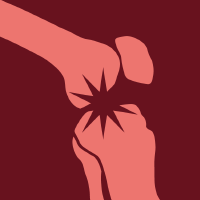Topic Menu
► Topic MenuTopic Editors


Crystal-Induced Arthritis: Pathogenetic Mechanisms and Clinical Advances
Topic Information
Dear Colleagues,
Crystal-induced arthritis represents one of the most common joint diseases worldwide. The inflammatory process, which is triggered by pathogenic crystals, including urate and calcium crystals, causes intense acute attacks with pain and systemic inflammatory symptoms. When left untreated, this condition leads to irreversible joint damage. Given its unique features, including its abrupt onset and spontaneous resolution, crystal-induced arthritis has represented a fascinating model of acute inflammation for years. In the last two decades, experimental and translational research in this field has contributed to improving our knowledge on the molecular mechanisms that are associated with different disease phases and to expand the pharmacological options for patients. Thus, the identification of IL-1β as the most important cytokine that orchestrates crystal-induced inflammation, especially in gout- and pyrophosphate calcium crystal-related flare-ups, has provided new therapeutic options for patients who are not responsive or who present important side effects to traditional therapies. Despite the progress that has been made so far, unmet needs persist in this field and are mainly linked to calcium crystal-deposition diseases. The lack of effective treatments makes calcium-related arthropathies a challenging area that certainly needs further and future advances. With this Topic, we would like to invite authors to contribute original research articles as well as review articles focused on recent findings on the mechanisms, clinical and genetic aspects, prevention, and management of crystal-induced arthritis.
Dr. Francesca Oliviero
Dr. Hang Korng Ea
Topic Editors
Keywords
- crystal-induced arthritis
- crystal-induced inflammation
- monosodium urate crystals
- calcium pyrophosphate crystals
- basic calcium phosphate crystals
- acute attack
- inflammasome
- IL-1
- gout
- pseudogout
- therapy
- biologics
Participating Journals
| Journal Name | Impact Factor | CiteScore | Launched Year | First Decision (median) | APC |
|---|---|---|---|---|---|

International Journal of Molecular Sciences
|
5.6 | 7.8 | 2000 | 16.3 Days | CHF 2900 |

Journal of Clinical Medicine
|
3.9 | 5.4 | 2012 | 17.9 Days | CHF 2600 |

Journal of Personalized Medicine
|
3.4 | 2.6 | 2011 | 17.8 Days | CHF 2600 |

Medicina
|
2.6 | 3.6 | 1920 | 19.6 Days | CHF 1800 |

Rheumato
|
- | - | 2021 | 15.0 days * | CHF 1000 |
* Median value for all MDPI journals in the second half of 2023.

MDPI Topics is cooperating with Preprints.org and has built a direct connection between MDPI journals and Preprints.org. Authors are encouraged to enjoy the benefits by posting a preprint at Preprints.org prior to publication:
- Immediately share your ideas ahead of publication and establish your research priority;
- Protect your idea from being stolen with this time-stamped preprint article;
- Enhance the exposure and impact of your research;
- Receive feedback from your peers in advance;
- Have it indexed in Web of Science (Preprint Citation Index), Google Scholar, Crossref, SHARE, PrePubMed, Scilit and Europe PMC.

